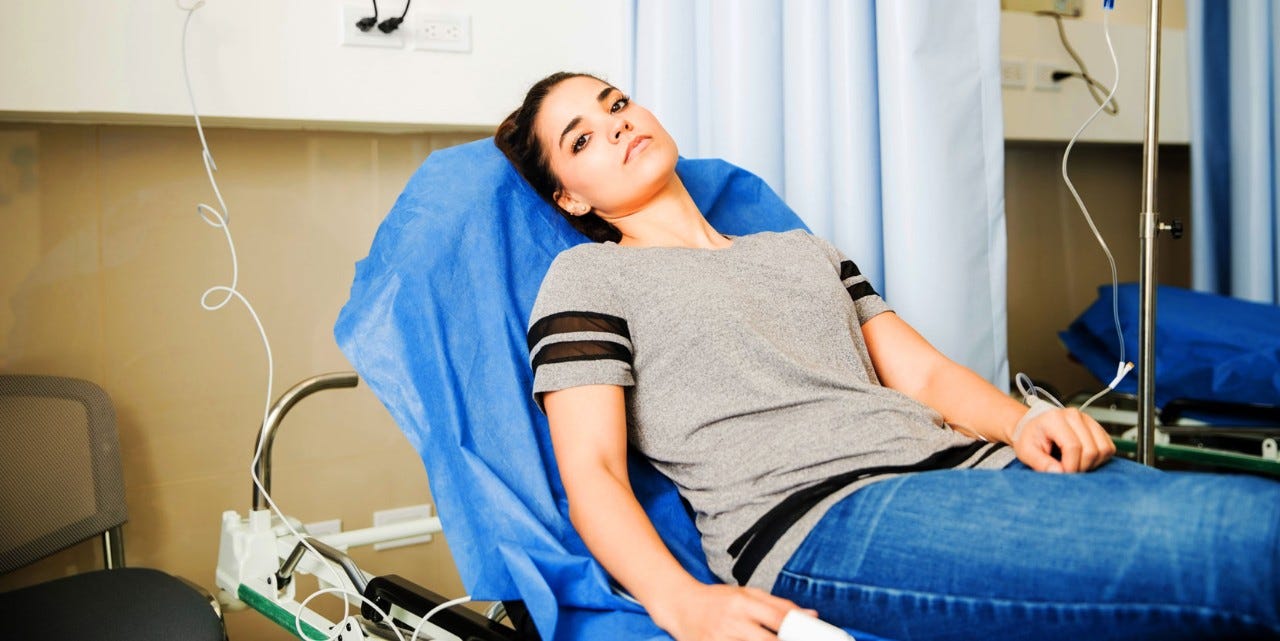Recognising and treating iron deficiency
Iron deficiency usually manifests itself with unspecific symptoms. Find out how to recognise iron deficiency and what you can do about it.

It is estimated that around two billion people suffer from iron deficiency. This makes it one of the most common deficiency diseases worldwide. Women of childbearing age are particularly prone to iron deficiency – five times more often than men. The reason for this is blood loss during the period.
Iron is an essential trace element that is required for oxygen transport and energy metabolism in the body, among other things. The Federal Food Safety and Veterinary Office (FSVO) recommends that men between the ages of 18 and 65 consume 11 milligrams of iron per day. For women of the same age, this value is slightly higher at 16 milligrams per day.
Sanitas explains: Help with iron deficiency
What are the causes of iron deficiency?
“Iron deficiency can be divided into three categories,” explains Dr Jutta Rose, a specialist in internal medicine at Sanacare. Causes can include diet, lifestyle and chronic or other illnesses.
-
Category 1: Reduced iron absorption
Vegetarians and vegans in particular should make sure to include foods with a high iron content in their diet. “For example, pulses such as lentils and chickpeas, wholegrain cereals, nuts and seeds such as pistachios and sunflower seeds, as well as vegetables and herbs such as salsify and parsley,” says Dr
In addition to diet, inflammatory diseases of the gastrointestinal tract can also be a reason for reduced iron absorption. An increased iron requirement, for example in pregnant women or competitive athletes , also belongs to category 1.
-
Category 2: Increased iron loss
If the body loses blood, it also loses iron. Possible causes of increased iron loss can be menstruation, regular blood donations or blood loss after an operation. But also internal or chronic bleeding and kidney dialysis.
-
Category 3: Iron utilisation disorder
In case of an iron utilisation disorder, the body cannot absorb the iron properly. This occurs, for example, in chronic diseases such as Crohn’s disease and ulcerative colitis or food intolerances such as coeliac disease. Medication such as certain acid blockers for the stomach, antibiotics or multivitamin preparations with vitamin E, calcium, zinc or magnesium can also inhibit iron absorption.
What are the symptoms of iron deficiency?
“The symptoms are complex and very unspecific,” explains Dr Jutta Rose. “They often include fatigue, reduced performance, hair loss, brittle nails or dry and cracked corners of the mouth.”
Other symptoms that may indicate iron deficiency are:
- Pale complexion
- Chest pain, palpitations and low blood pressure
- Shortness of breath during physical exertion
- Concentration difficulties
- Increased susceptibility to infections
- Irritability, inner restlessness (restless leg syndrome)
If iron deficiency anaemia also occurs, the following symptoms may be present:
- Hair loss
- Brittle nails
- Throbbing or ringing in the ears
- Headaches
- Dizziness
- Difficulty swallowing
- Sore tongue
Iron deficiency during pregnancy: what to look out for
Pregnant women and breastfeeding mothers have an increased iron requirement because they also need to provide iron for their child. A possible iron deficiency should always be checked by a doctor. If a deficiency is diagnosed, iron tablets are usually prescribed. This is because severe iron deficiency during pregnancy can lead to complications:
- Increased risk of infection
- Increased risk of premature birth
- Possible growth retardation in the unborn child
Mums should make sure they consume enough iron after the birth, too. Severe iron deficiency in the postpartum period can lead to stress, impaired cognition or even depression. Iron is just as important during breastfeeding.
Recognise iron deficiency by checking your ferritin value
Ferritin is a protein molecule that stores iron in the human body and is therefore an important parameter for determining iron levels. The problem is that scientists do not agree on when ferritin levels are too low. The World Health Organization (WHO) defines standard values of 15 to 150 µg/l for adult women and 15 to 200 µg/l for men. However, studies in recent years suggest a ferritin value below 30 µg/l as confirmation of iron deficiency.
Therapy and prevention: What helps best against iron deficiency?
Iron deficiency can usually be prevented by eating a balanced diet. The body can best utilise iron from animal products. Red meat and liver are particularly good sources of iron. If you follow a vegetarian or vegan diet, it is best to eat the following foods:
- Pulses: lentils, soya beans, chickpeas
- Nuts and seeds: pistachios, sunflower seeds
- Vegetables and herbs: Onions, black salsify, watercress, parsley, nettles, dandelion
Caution is advised with ready-made meals, writes the SRC blood donation on its website. This is because: "Ready meals often contain substances that have a negative effect on iron absorption." The same applies to coffee, tea, milk, cocoa, cola and red wine: they also inhibit iron absorption. Vitamin C, on the other hand, promotes iron absorption. Swiss Transfusion SRC therefore recommends fruit juices or fruit spritzers with meals.
“If iron deficiency occurs despite a balanced diet, in other words, if your ferritin falls below a certain limit, the relevant symptoms are present or you belong to a risk group, then you need iron tablets,” says Dr Jutta Rose. Sometimes the tablets lead to gastrointestinal complaints such as heartburn, cramps, diarrhoea, constipation, nausea or vomiting – in which case iron infusions can be a good alternative.


